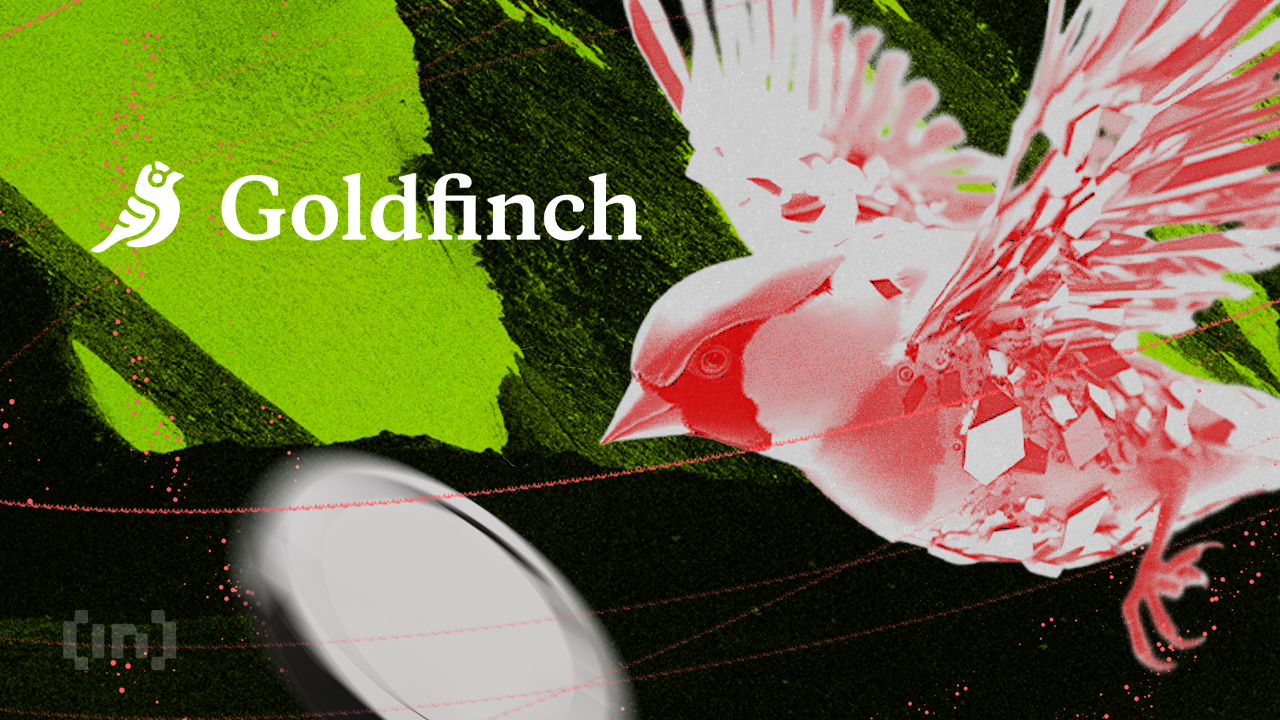“Real yields, from real companies” — that’s how Goldfinch Finance, the company behind the Goldfinch protocol, pitches its decentralized lending platform. The company aspires to revolutionize DeFi by providing a platform that enables institutions to lend and borrow crypto assets without traditional financial intermediaries.
With Goldfinch, you can lend crypto and earn high yields. Or borrow without needing to provide cryptocurrencies as collateral. But what sets Goldfinch apart from other DeFi protocols? In this guide, we dive into the Goldfinch protocol, how it works, and how it could potentially disrupt the DeFi space.
BeInCrypto Trading Community in Telegram: read reviews on the best crypto projects & the hottest news, read technical analysis on coins & get answers to all your questions from PRO traders & experts!
What is Goldfinch protocol?

Let’s consider a hypothetical scenario: you’re a crypto user in search of a bit of financial wiggle room. Maybe you want to start a new project. Whatever the reason, a DeFi loan seems like a potential option.
Most DeFi platforms require you to over-collateralize your loan with cryptocurrencies. The rationale behind this is to ensure that in the event of a default, the platform can recoup the loan amount by seizing your collateral.
But there lies the problem. If you find yourself in the market for a crypto loan, it’s fair to assume that you may not have enough crypto to deposit as collateral. That’s the conundrum many potential borrowers face in the DeFi lending market.
Moreover, even if you have enough crypto to deposit as collateral and secure the loan, there are still inherent risks associated with the process. After all, cryptocurrencies can be extremely volatile, leaving you vulnerable to significant losses. That’s precisely where the Goldfinch protocol aims to make an impact.
Goldfinch’s answer to the collateral conundrum
Goldfinch Finance is a decentralized lending platform built on the Ethereum blockchain. It was founded in July 2020 by Mike Sall and Blake West, both ex-Coinbase employees. So far, the company has raised more than $37 million in funding from 23 investors, according to CrunchBase.
The Goldfinch protocol leverages smart contracts to eliminate the requirement for centralized intermediaries in the lending process. Thus, facilitating a transparent, automated, and cost-effective borrowing and lending experience for its users.
The primary goal of Goldfinch is to expand access to affordable and accessible lending options to businesses worldwide.
So, what makes Goldfinch stand out from the sea of DeFi protocols on the market? Well, the company’s unique credit model is a major differentiator. It uses something called “trust through consensus,” which is basically a credit scoring system that evaluates borrowers’ creditworthiness based on their past behavior.
The platform also requires you to deposit collateral as a safety net. However, unlike other DeFi lending platforms that rely solely on crypto collaterals to secure loans, the Glodfinch protocol allows complete collateralization of loans using off-chain assets and income. This could be a game-changer of significant proportions for borrowers worldwide. No wonder that the project’s backers tout it as the missing piece that will finally make DeFi lending accessible to the masses.
Sponsored SponsoredHow the Goldfinch protocol works

Before delving into Goldfinch’s modus operandi, it is essential to understand the key players in the Goldfinch ecosystem.
Key players
The Goldfinch protocol comprises an ecosystem with a diverse cast of characters, each playing a crucial role in its operations.
First up, we have the investors who provide stablecoins (e.g., USDC) to the protocol. The platform then uses the fund to lend to eligible borrowers:
- Backers: Backers analyze and evaluate individual Borrower Pools before investing with their own first-loss capital, which then makes them eligible for the protocol’s most substantial yields.
- Liquidity providers: Liquidity providers contribute second-loss capital to the Senior Pool, which then distributes the funds among various Borrower Pools based on the backers’ evaluation and assessment. This ensures diversification and liquidity, benefiting the protocol and the participants alike.
Next, we have the Borrowers seeking financing from Goldfinch by proposing Borrower Pools for network assessment. These pools contain key information regarding loan terms, including interest rates and repayment schedules. Borrowers are an essential component of the Goldfinch protocol as they drive the ecosystem’s vitality and make room for other players to participate.
As for Auditors, they are the participants who keep everything in check and make sure no fraudulent activities take place. They vote to approve the Borrowers, which is a crucial step before the Borrowers can propose their pools to the Backers. The protocol randomly selects auditors, and if they catch any fraudulent activity, they earn some well-deserved rewards.
SponsoredLast but not least, we have Members. These are investors who have taken their participation to the next level by supplying capital and GFI to a Goldfinch Membership Vault. They get to support the network’s growth and security and receive Member Rewards for their efforts.
Trust through consensus
Goldfinch uses something called “trust through consensus” to assess and allocate funds from the Senior Pool. The Senior Pool is a smart contract that allocates funds to individual Borrower Pools as per the consensus these pools receive from Backers.
That means the protocol does not trust any individual Backer or Auditor. Instead, it relies on the collective consensus or action of different participants. Simply put, the higher the number of Backers providing capital to a Borrower Pool, the higher the ratio of leverage the Senior Pool adds to it.
How Goldfinch protocol connects borrowers and investors
The process is as follows: Borrowers (currently off-chain lending businesses) submit proposals outlining the deal terms for credit lines, known as Borrower Pools.
Once a proposal is approved, investors have two avenues for providing the requested capital. They can assume the role of a Backer and supply the capital directly to the pool. Alternatively, they may also assume the role of a Liquidity Provider (via the Senior Pool) and automatically allocate capital across the Goldfinch protocol.
Once the pool is ready, the Borrower can start drawing down USDC or any other compatible stablecoin from it. They can then exchange the USDC for fiat to meet their business needs.
As of April 2023, the company has provided active loans valued at more than $100 million. As per Messari data, the 30-day protocol revenue exceeds $115,000 at the time of writing, while the total revenue is approximately $1.8 million.
In short, Goldfinch Protocol aims to provide a win-win situation for both Borrowers and Investors, unlocking access to global capital while ensuring efficient and effective local loan servicing.
Sponsored SponsoredThe two token model: GFI and FIDU

The Goldfinch protocol has two native ERC20 tokens — GFI and FIDU. Additionally, it supports stablecoins for loans and investments. As of April 2023, the protocol only supports USDC, although it may expand support to other stablecoins in the future.
GFI plays a crucial role in the Goldfinch ecosystem, serving as a governance token for auditor staking, voting, voting rewards, protocol incentives, community grants, and more. You can also deposit your GFI tokens into a Member Vault and be rewarded with Member Rewards for contributing to the protocol’s growth.
FIDU reflects the capital a Liquidity Provider deposits in the Senior Pool. Essentially, when you add capital to the Senior Pool, you receive FIDU in return, which you can later redeem for USDC using the Goldfinch DApp. The FIDU to USDC exchange rate is determined based on the Senior Pool’s total asset value.
Goldfinch has capped the initial supply of the GFI token at just over 114 million tokens. There is no inflation at present, although the company says it might be good for the protocol to add marginal inflation after about three years from launch. It has also stated that the decision to incorporate inflation will be taken only after due discussion with the community.
The GFI token allocation is as follows:
- Early and future team: 28.4%
- Early supporters: 21.6%
- Liquidity providers: 16.2%
- Treasury: 14.8%
- Backers: 8.0%
- Warber Labs: 4.4%
- Auditors: 3%
- Borrowers: 3%
- Contributors: 0.7%
Can the Goldfinch protocol revolutionize DeFi lending?
At a time when every new crypto project claims to be “revolutionary,” the Goldfinch protocol actually manages to stand out. With its unique focus on serving businesses and its innovative approach to lending, Goldfinch promises to make DeFi lending simpler and more accessible. Of course, Goldfinch’s unique approach to lending requires careful consideration of safety measures. But overall, if all participants play their part and abide by existing regulations, the prospects for the protocol’s contribution to the DeFi ecosystem are promising.

